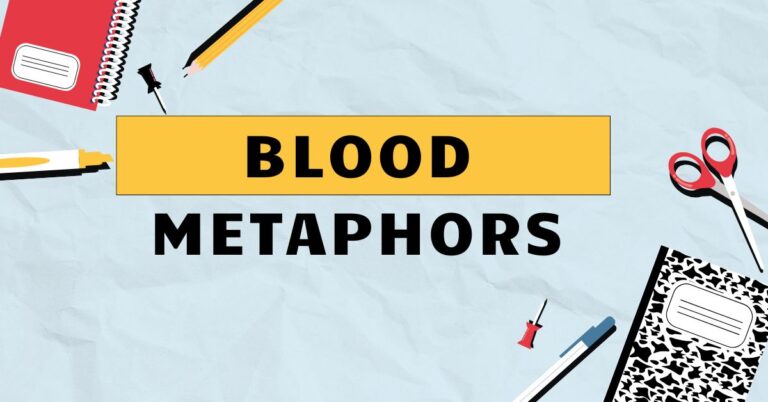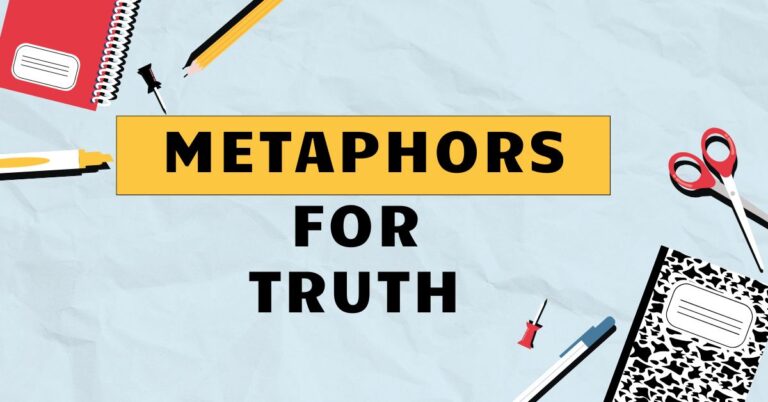41Basketball Metaphors: A Slam Dunk Guide to Figurative Language
Metaphors are powerful tools in the English language, allowing us to understand complex concepts by relating them to something familiar. When applied to basketball, metaphors enrich our descriptions, making them more vivid and engaging.
Mastering basketball metaphors not only enhances comprehension and communication within sports contexts but also improves overall language proficiency. This guide is designed for English language learners, sports enthusiasts, and anyone seeking to elevate their understanding of figurative language through the exciting world of basketball.
Table of Contents
- Introduction
- Definition of Metaphor
- Classification of Metaphors
- Function of Metaphors
- Contexts for Using Metaphors
- Structural Breakdown of Basketball Metaphors
- Source Domain (Basketball)
- Target Domain (Abstract Concepts)
- Mapping Between Domains
- Types and Categories of Basketball Metaphors
- Action Metaphors
- Strategy Metaphors
- Player Metaphors
- Game Metaphors
- Court Metaphors
- Examples of Basketball Metaphors
- Action Metaphors Examples
- Strategy Metaphors Examples
- Player Metaphors Examples
- Game Metaphors Examples
- Court Metaphors Examples
- Usage Rules for Basketball Metaphors
- Appropriateness and Context
- Clarity and Relevance
- Avoiding Overuse
- Common Mistakes with Basketball Metaphors
- Misunderstanding the Metaphor
- Inappropriate Application
- Practice Exercises
- Exercise 1: Identifying Metaphors
- Exercise 2: Creating Metaphors
- Exercise 3: Analyzing Metaphors
- Advanced Topics in Basketball Metaphors
- Extended Metaphors
- Mixed Metaphors
- Frequently Asked Questions
- Conclusion
Definition of Metaphor
Ametaphoris a figure of speech that directly compares two unrelated things, stating that one thingisanother. Unlike similes, which use “like” or “as” to make comparisons, metaphors create a more implicit and forceful connection.
Metaphors are essential for adding depth, color, and nuance to language, making abstract concepts more accessible and relatable. They operate by transferring qualities from one entity to another, creating a novel understanding.
Classification of Metaphors
Metaphors can be classified based on their structure and function. Conceptual metaphors are underlying frameworks that shape our understanding of abstract ideas (e.g., “time is money”). Visual metaphors use images to draw comparisons. Dead metaphors are so common that they’ve lost their figurative impact (e.g., “the heart of the matter”). Understanding these classifications helps us appreciate the diverse ways metaphors function in language.
Function of Metaphors
The primary function of a metaphor is to enhance understanding by relating the unfamiliar to the familiar. Metaphors can also evoke emotions, create vivid imagery, and persuade audiences.
In literature, they add layers of meaning and contribute to the overall aesthetic effect. In everyday language, they simplify complex ideas and make communication more engaging.
The effectiveness of a metaphor lies in its ability to resonate with the audience’s experiences and knowledge.
Contexts for Using Metaphors
Metaphors are used in a wide range of contexts, from literature and poetry to everyday conversation and business communication. In sports, metaphors are particularly prevalent, used by commentators, coaches, and players to describe strategies, performances, and emotional states.
The context determines the appropriateness and effectiveness of a metaphor. A metaphor that works well in a casual conversation might not be suitable for a formal presentation.
Structural Breakdown of Basketball Metaphors
Understanding the structure of a metaphor involves identifying thesource domain(the concrete concept being used) and thetarget domain(the abstract concept being explained). In basketball metaphors, the source domain is, of course, basketball, while the target domain can be various aspects of life, business, or even other sports.
The connection between these domains is established through a process calledmapping, where qualities of the source domain are transferred to the target domain.
Source Domain (Basketball)
The source domain in basketball metaphors includes all aspects of the game: players, coaches, the court, the ball, strategies, plays, and the rules. These elements provide a rich source of imagery and concepts that can be used to describe and understand other areas of life.
For example, the concept of a “full-court press” can be used to describe an aggressive business strategy.
Target Domain (Abstract Concepts)
The target domain in basketball metaphors can be any abstract concept that benefits from being understood through the lens of basketball. This could include business strategies, personal relationships, political campaigns, or even scientific theories.
The key is to find a relevant connection between the characteristics of the basketball concept and the abstract concept being explained. For instance, teamwork in basketball can be a metaphor for collaboration in the workplace.
Mapping Between Domains
Mapping is the process of identifying the similarities between the source and target domains. This involves transferring specific attributes or qualities from the basketball concept to the abstract concept.
For example, the precision and accuracy required for a “three-pointer” can be mapped onto the attention to detail needed for a successful business presentation. The effectiveness of a metaphor depends on the strength and relevance of this mapping.
Types and Categories of Basketball Metaphors
Basketball metaphors can be categorized based on the aspect of the game they reference. This includes metaphors related to actions, strategies, players, the game itself, and the court.
Each category provides a unique perspective and can be used to describe different types of situations and concepts.
Action Metaphors
Action metaphors describe specific movements or plays in basketball and relate them to actions in other contexts. Examples include “slam dunking” a presentation, “dribbling” through obstacles, or “passing the ball” to a colleague.
These metaphors often convey a sense of energy, skill, and teamwork.
Strategy Metaphors
Strategy metaphors use basketball tactics to describe strategic approaches in other fields. Examples include “running a full-court press” in a business negotiation, “setting a screen” to create an opportunity, or “calling a timeout” to reassess a situation.
These metaphors emphasize planning, coordination, and adaptability.
Player Metaphors
Player metaphors compare individuals to roles or characteristics of basketball players. Examples include being a “team player,” a “clutch performer,” or a “benchwarmer.” These metaphors highlight qualities such as leadership, reliability, and dedication.
Game Metaphors
Game metaphors use the overall concept of a basketball game to describe larger situations or processes. Examples include “playing the game” of politics, “winning the game” of business, or “changing the game” with a new innovation.
These metaphors often convey a sense of competition, strategy, and ultimate goals.
Court Metaphors
Court metaphors use the physical space of the basketball court to represent different environments or situations. Examples include “having home-court advantage,” being “out of bounds,” or “dominating the paint.” These metaphors emphasize the importance of environment, boundaries, and control.
Examples of Basketball Metaphors
The following tables provide extensive examples of basketball metaphors, organized by category. Each example illustrates how a specific basketball concept can be used to describe a different situation or idea.
Action Metaphors Examples
This table showcases action metaphors, which use basketball moves to describe actions in various contexts, emphasizing dynamism and skill.
| Metaphor | Meaning | Example Sentence |
|---|---|---|
| Slam dunking | Achieving something easily and impressively | She slam dunked the presentation, leaving the audience in awe. |
| Dribbling through | Navigating obstacles with skill and agility | He dribbled through the bureaucratic red tape to get the project approved. |
| Passing the ball | Delegating responsibility or sharing information | The CEO passed the ball to the marketing team to handle the new campaign. |
| Shooting for the stars | Aiming for ambitious goals | They are shooting for the stars with their innovative product launch. |
| Taking a shot | Taking a risk or trying something new | He decided to take a shot at starting his own business. |
| Air balling | Failing completely and visibly | The project air balled when the team missed the deadline. |
| Rebounding | Recovering from a setback | After the initial failure, the company rebounded with a new strategy. |
| Blocking | Preventing something from happening | The lawyer blocked the opposing counsel’s attempt to introduce inadmissible evidence. |
| Stealing the ball | Gaining an advantage unexpectedly | She stole the ball in the negotiation by uncovering a key piece of information. |
| Fast breaking | Moving quickly to capitalize on an opportunity | The company is fast breaking into the new market with its aggressive marketing campaign. |
| Posting up | Establishing a strong position | The company posted up in the market by securing key partnerships. |
| Driving to the basket | Pursuing a goal directly and aggressively | He drove to the basket during the debate, directly addressing the core issues. |
| Faking left and going right | Deceiving someone with a feint | The politician faked left and went right, appealing to a different group of voters. |
| Double-teaming | Ganging up on someone or something | The regulators double-teamed the company in the investigation. |
| Alley-oop | Collaborating to achieve a spectacular result | The two departments worked together in an alley-oop to deliver the project ahead of schedule. |
| Free throw | An easy opportunity to score | Getting the contract was like a free throw after all the hard work they had put in. |
| Full-court press | Applying intense pressure | The sales team put on a full-court press to meet the quarterly quota. |
| Inbounding the ball | Starting something new | After a period of restructuring, the company was ready to inbound the ball with a fresh strategy. |
| Jumping the gun | Starting too early or acting prematurely | He jumped the gun by announcing the deal before it was finalized. |
| Swishing the shot | Performing flawlessly | The presentation swished the shot, impressing everyone in the room. |
| Taking it to the hoop | Addressing an issue directly and forcefully | The journalist took it to the hoop by asking the tough questions during the interview. |
| Cherry-picking | Selecting only the best options or opportunities | The investor was accused of cherry-picking the most profitable assets from the company. |
| Zone defense | Protecting a specific area or interest | The company employed a zone defense to protect its market share from competitors. |
| Man-to-man defense | Dealing with each issue or person individually | The customer service team used a man-to-man defense to address each complaint personally. |
| Pick and roll | Using teamwork and strategy to gain an advantage | The marketing and sales teams used a pick and roll strategy to generate leads and close deals. |
Strategy Metaphors Examples
The following table illustrates strategy metaphors, using basketball tactics to describe strategic approaches in various fields, emphasizing planning and coordination.
| Metaphor | Meaning | Example Sentence |
|---|---|---|
| Running a full-court press | Applying intense pressure to achieve a goal | The marketing team decided to run a full-court press to increase sales before the end of the quarter. |
| Setting a screen | Creating an opportunity by blocking an obstacle | The assistant set a screen for her boss by handling all the initial inquiries, allowing him to focus on the main presentation. |
| Calling a timeout | Pausing to reassess a situation | The project manager called a timeout to re-evaluate the project plan after encountering unexpected challenges. |
| Playing zone defense | Protecting a specific area or interest | The company decided to play zone defense around its core product line to fend off competitors. |
| Man-to-man coverage | Dealing with each issue or person individually | The customer service team provided man-to-man coverage to each client, ensuring personalized attention. |
| Running the point | Taking the lead and directing the action | She ran the point on the project, coordinating all the team members and ensuring its success. |
| Going for the three-pointer | Taking a high-risk, high-reward approach | The company went for the three-pointer by investing heavily in a new, unproven technology. |
| Playing the percentages | Making decisions based on statistical probabilities | The investor played the percentages by diversifying his portfolio across various asset classes. |
| Box and one | Focusing intensely on one key individual while maintaining a general defense | The security team used a box and one strategy, focusing heavily on the main suspect while monitoring the overall situation. |
| Triangle offense | A strategic system with multiple options and flexibility | The team adopted a triangle offense approach to project management, allowing for adaptability and multiple paths to success. |
| Isolating a player | Creating a one-on-one opportunity | The lawyer tried to isolate the key witness during cross-examination to expose inconsistencies in their testimony. |
| Running a play | Executing a planned strategy | The marketing team ran a play by launching a targeted ad campaign to attract new customers. |
| Changing the lineup | Altering the team or resources to improve performance | The CEO changed the lineup by reorganizing the management structure to boost efficiency. |
| Drawing up a play | Creating a strategy to achieve a specific goal | The consultant drew up a play to streamline the company’s operations and reduce costs. |
| Controlling the tempo | Dictating the pace of events | The negotiator controlled the tempo of the meeting by setting the agenda and managing the discussion. |
| Pressing the issue | Aggressively pursuing a point or objective | The journalist pressed the issue by repeatedly asking the politician about the controversial policy. |
| Working the ball inside | Focusing on fundamental or core aspects | The company worked the ball inside by prioritizing customer satisfaction and product quality. |
| Playing above the rim | Exceeding expectations and demonstrating exceptional skill | The team played above the rim by delivering outstanding results despite limited resources. |
| Cutting to the basket | Seizing an opportunity quickly and decisively | The entrepreneur cut to the basket by launching his product just as the market demand surged. |
| Spacing the floor | Creating opportunities by distributing resources effectively | The project team spaced the floor by delegating tasks appropriately, ensuring no one was overburdened. |
| Closing out | Finishing a task or project effectively | The team closed out the quarter strong, exceeding their sales targets. |
| Taking the charge | Absorbing the impact or blame to protect the team | The manager took the charge for the project’s failure to shield his team from criticism. |
| Running the clock | Strategically managing time to achieve a goal | The negotiator ran the clock by prolonging discussions until the opposing party conceded. |
| Setting up the offense | Preparing a strategy for success | The marketing team spent weeks setting up the offense before launching the new campaign. |
| Establishing position | Securing a strong foothold in a market or situation | The company worked hard to establish position in the emerging market before competitors could gain a foothold. |
Player Metaphors Examples
This table presents player metaphors, comparing individuals to roles or characteristics of basketball players, emphasizing qualities such as leadership and reliability.
| Metaphor | Meaning | Example Sentence |
|---|---|---|
| Team player | Someone who works well with others | Sarah is a true team player, always willing to help her colleagues. |
| Clutch performer | Someone who performs well under pressure | He’s a clutch performer; he always delivers when it matters most. |
| Benchwarmer | Someone who is not actively contributing | Unfortunately, he felt like a benchwarmer, as his ideas were never considered. |
| All-star | Someone who is exceptionally talented | She’s an all-star in her field, known for her innovative research. |
| Rookie | Someone who is new to a field or role | As a rookie in the industry, he had a lot to learn. |
| Point guard | A leader who directs and coordinates efforts | As the project’s point guard, she ensured everyone stayed on track. |
| Power forward | Someone who is strong and assertive | He’s a power forward in negotiations, always driving the deal forward. |
| Center | Someone who is central to the team’s success | She’s the center of the department, keeping everything organized. |
| Sixth man | Someone who provides valuable support off the bench | He’s our sixth man, always ready to step in and make a contribution. |
| Defensive player | Someone who protects and defends against threats | She’s a defensive player, always anticipating potential problems. |
| Free agent | Someone not committed to any particular team or project | He’s a free agent, exploring different career opportunities. |
| Franchise player | Someone who is essential to the organization’s success | She’s a franchise player; we can’t imagine the company without her. |
| Role player | Someone who fulfills a specific function within the team | He’s a role player, excelling at data analysis and reporting. |
| Veteran | Someone with extensive experience | As a veteran in the industry, he offered valuable insights. |
| Underdog | Someone who is not expected to succeed | They were the underdog in the competition, but they surprised everyone. |
| Enforcer | Someone who ensures rules are followed | He’s the enforcer, making sure everyone adheres to the company’s policies. |
| Playmaker | Someone who creates opportunities for others | She’s a playmaker, always finding innovative solutions to problems. |
| Sharpshooter | Someone who is highly accurate and precise | He’s a sharpshooter when it comes to identifying market trends. |
| Floor general | Someone who controls and directs the team’s strategy | As the floor general, she orchestrated the project’s success. |
| Glue guy | Someone who holds the team together | He’s the glue guy, keeping morale high and fostering collaboration. |
| Ball hog | Someone who dominates and doesn’t share | He’s a ball hog, never giving others a chance to contribute. |
| Sideline reporter | Someone who observes and reports on events | As the sideline reporter, she provided insights into the company’s performance. |
| Powerhouse | Someone or something with immense strength and influence | The company is a powerhouse in the industry, dominating the market. |
| Rising star | Someone who is quickly gaining recognition and success | She is a rising star in the company, quickly climbing the ranks. |
| Game changer | Someone or something that fundamentally alters the situation | His innovative idea was a true game changer for the industry. |
Game Metaphors Examples
The following table provides examples of game metaphors, using the overall concept of a basketball game to describe larger situations or processes, emphasizing competition and strategy.
| Metaphor | Meaning | Example Sentence |
|---|---|---|
| Playing the game | Engaging in a strategic or competitive activity | In politics, you have to know how to play the game to succeed. |
| Winning the game | Achieving a major objective or success | The company is focused on winning the game of market dominance. |
| Changing the game | Introducing a significant innovation or disruption | Their new technology is changing the game in the industry. |
| End game | The final stage or objective | The end game is to secure a merger with the larger corporation. |
| Ahead of the game | Being in a leading or advantageous position | They are always ahead of the game with their innovative product development. |
| Behind the game | Being in a trailing or disadvantageous position | The project fell behind the game due to unexpected delays. |
| Level playing field | A fair and equitable situation | We need to create a level playing field for all competitors. |
| Home game | A situation where one has an advantage | Negotiating in our own office gave us a home game advantage. |
| Away game | A situation where one is at a disadvantage | Presenting to the board was like an away game for the junior executive. |
| Playing hardball | Using aggressive tactics | The negotiator started playing hardball to get the best deal. |
| Out of bounds | Beyond acceptable limits or behavior | His comments were considered out of bounds and inappropriate. |
| Game plan | A strategy or plan of action | The team developed a comprehensive game plan to achieve its goals. |
| Calling the shots | Making the decisions and directing the action | As the CEO, she called the shots for the entire company. |
| Keeping score | Monitoring progress and results | We need to keep score to track our performance against our objectives. |
| Sudden death | A situation where one mistake leads to immediate failure | The final round of negotiations was sudden death; one wrong move and the deal would collapse. |
| Time out | A temporary break to reassess the situation | We need to call a time out to discuss our next move. |
| Full court press | Applying intense pressure | The sales team is putting on a full court press to meet the quarterly quota. |
| Overtime | Putting in extra effort or time to achieve a goal | We’re working overtime to finish the project on time. |
| Under review | Being evaluated or examined | The policy is currently under review by the committee. |
| Game face | A serious and determined expression | He put on his game face before entering the negotiation room. |
| Huddle up | Gathering together to strategize | The team huddled up to discuss their plan of action. |
| Hail Mary | A last-ditch effort with little chance of success | They attempted a Hail Mary pass to save the project, but it was too late. |
| On the ropes | In a difficult or precarious situation | The company was on the ropes after the scandal broke. |
| Knocking it out of the park | Achieving exceptional success | She knocked it out of the park with her presentation. |
| Squeaking by | Barely succeeding or avoiding failure | They squeaked by with a narrow victory. |
Court Metaphors Examples
This table illustrates how the physical space of a basketball court can be used metaphorically to represent different environments or situations, highlighting environment and control.
| Metaphor | Meaning | Example Sentence |
|---|---|---|
| Home-court advantage | Having an advantage due to familiarity or support | The local candidate had home-court advantage in the election. |
| Out of bounds | Beyond acceptable limits or inappropriate | His behavior at the conference was completely out of bounds. |
| Dominating the paint | Having control over a key area or aspect | The company is dominating the paint in the market with its superior product line. |
| In the key | Being in a crucial or important position | She’s in the key to the success of the project. |
| Full court | Using all available resources or efforts | The company launched a full court marketing campaign to promote the new product. |
| Half court | Restricting resources or efforts to a specific area | They played half court, focusing only on key demographics. |
| Three-point range | Attempting something ambitious or high-risk | The company was operating in the three-point range with its innovative but untested technology. |
| Sidelines | Being in a passive or observational position | He remained on the sidelines during the debate, offering no input. |
| Baseline | The starting point or foundation | The baseline for the project was established in the initial meeting. |
| On the court | Actively participating or involved | She’s been on the court, leading the team through the crisis. |
| Off the court | Not currently involved or active | He’s been off the court for a while, recovering from his illness. |
| Paint | The area close to the basket, representing intense activity | The negotiations got heated when both sides tried to control the paint. |
| Backcourt | The rear area, representing support or defense | The IT department is the backcourt, providing essential support. |
| Frontcourt | The forward area, representing offense or progress | The sales team is the frontcourt, driving revenue growth. |
| Top of the key | A central and strategic position | She positioned herself at the top of the key, directing the project’s flow. |
| Free throw line | A point of opportunity or challenge | The company stood at the free throw line, facing a critical decision. |
| End line | The point of completion or resolution | The project crossed the end line after months of hard work. |
| Beyond the arc | Attempting something innovative or unconventional | The company was thinking beyond the arc with its radical new strategy. |
| In the lane | Being in a direct path to success or failure | They were in the lane to secure the contract, but faced stiff competition. |
| The sidelines | Being in a position to observe without participating | He chose to remain on the sidelines, watching the events unfold. |
| Key position | A critical or strategic place | She holds a key position in the company, influencing major decisions. |
| Restricted area | A place with limited access or influence | The media was kept out of the restricted area during the negotiations. |
| The arc | A boundary or limit | They pushed the boundaries beyond the arc of conventional thinking. |







